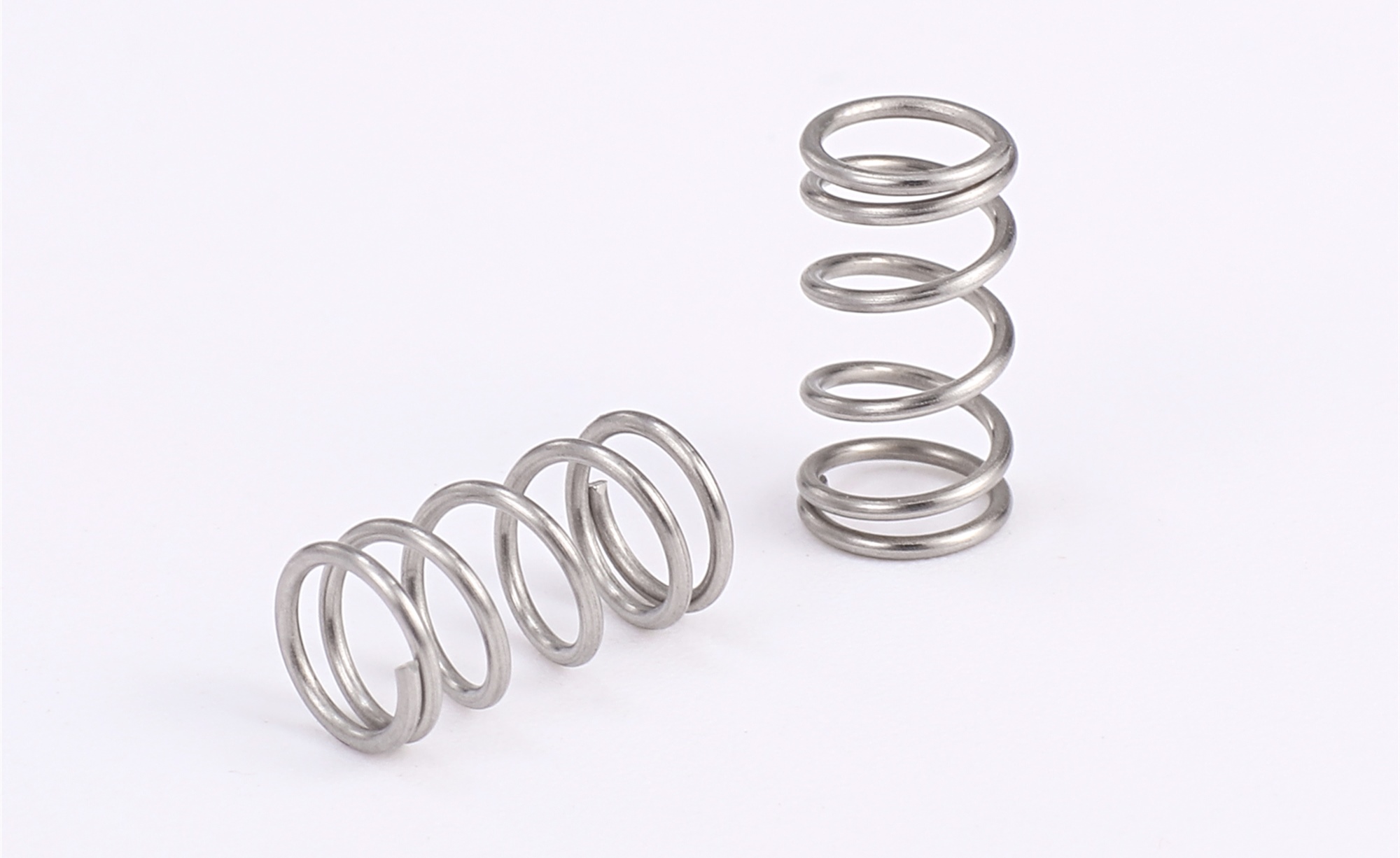Most widely used, in manufacturing, the spiral wound into a separate ring, so that each ring gap (pitch), so that force contraction, to maintain tension to the two ends.
When under the maximum load, it cannot be completely compressed, and the gap must be kept between effective turns to avoid friction or other material embedding, causing fatigue damage.
The free length of the spring should be equal to the solid length of the spring plus the gap and the amount of deformation.
To increase the contact surface of the compression spring, the surface should be ground to obtain 60~80% contact surface.
Its end has a variety of shapes: two seated rings, grinding equality at both ends.
The two ends may be either open or closed or flat or worn because they are under pressure.The following is the necessary information of a compression spring:
(1) control diameter: (a) outer diameter, (b) inner diameter, (c) inner diameter of the casing and (d) outer diameter of the round rod.
(2) size of Wire or bar.
(3) materials (type and grade).

(4) winding number :(a) total winding number and (b) right or left turn.
(5) Style of ends.
(6) the load under the length of a torsion region.
(7) load ratio within the range of one to several inches.
(8) the Maximum solid height is the Maximum solid height.
(9) minimum compression height during operation.
Compression Spring is the first type of Compression Spring, which can be shaped by design from straight, cone-shaped to compact, convex waist, and even various types of tail end.
Compression Spring is the most widely used of all Spring types. Its products have a wide range of application, including electronics, motor, computer, information, automobile, bicycle, hardware tools, gifts, toys and even national defense industry. Due to its simple design and principle, it is also the simplest manufacturing control.